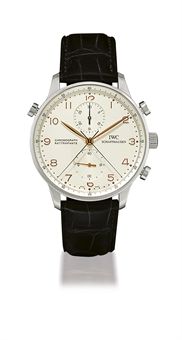 It seems that a certain degree of misunderstanding is prevalent among some people with regards to water-proof watches. Just because you can use the watch under water, certainly does not mean you can can wear it in the shower or bath. The reason for this is that during showers or baths, the steam generated by the hot water is able to enter the watch casing, once the temperature cools, the water vapor is transformed into water, thus severely damaging the parts inside the watch. Hence, please do not ever wear watches when you shower or bath. I thank Mr Tsai for reminding me about this.
It seems that a certain degree of misunderstanding is prevalent among some people with regards to water-proof watches. Just because you can use the watch under water, certainly does not mean you can can wear it in the shower or bath. The reason for this is that during showers or baths, the steam generated by the hot water is able to enter the watch casing, once the temperature cools, the water vapor is transformed into water, thus severely damaging the parts inside the watch. Hence, please do not ever wear watches when you shower or bath. I thank Mr Tsai for reminding me about this.Chronograph Watch
A chronograph is a complication watch, which means it has functions apart from just telling the time. The chronograph is essentially a fancy name for a watch with a stopwatch function, where the watch has an independent sweep seconds hand. The name comes from the Greek words of 'chronos' and 'graph', which mean time and writing respectively. It was arguably invented by Nicholas Rieussec for the French King XVIII, as the monarch thoroughly enjoyed watching horse races and wanted to know how long each race lasted.
| Tag Heuer Carrera Calibre 1887 |
Generally, there are three major types of chronographs today, namely single pusher, flyback and rattrapante. The single pusher uses one button on the side of the watch case to start, stop and reset the timer on each successive push. A flyback chronograph means there is one button to start and stop the chronograph function and another button to reset the timer to zero. A rattrapante is also known as a split-seconds or double chronograph as it consists of two chronograph seconds hands. The first push of the first button starts both hands together, another push will stop one hand, while the other hand will continue moving. Another push will allow the stopped hand to catch up to the moving hand. The second button allows both seconds hands to be reset to zero.
 |
| IWC Portuguese Rattrapante |
Most chronographs have the independent sweep seconds hand mounted in the center and rests vertically. There are subdials that display the minutes and running seconds. Typically the designs of chronograph watches can be said to look more sporty or utilitarian, thus inferring masculine qualities. The size of the face usually varies from 40mm to 48mm. Naturally many people today will suggest that the chronograph is redundant since almost all digital watches and mobile phones have a stopwatch function, but there are occasions when the chronograph is handy.
When to Wear:
At the office, so you can count the exact amount of time it takes for your boss to lose his temper again. At the gym to measure the time between your work-outs. When you need to time yourself swimming or running. Basically you can take your chronograph everywhere except for the most formal events and showers.
Classic Chronograph Watches:
Omega Speedmaster Professional, Mont Blanc Nicholas Rieussec, Breitling Navitimer, Zenith El Primero, (Tag) Heuer Carrera Calibre, Rolex Cosmograph Daytona
No comments:
Post a Comment